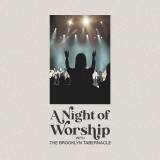Know Your Voice Type (PART 2)

This is a continuation and build-up of Know Your Voice Type (PART 1) and I hope you have checked it out so you don't miss out on the foundational knowledge on voice types. Click on the link above to check it out then we shall proceed to this next part.
Soprano

A typical soprano can vocalize B3 to C6, though a soprano coloratura can sing a lot higher than that reaching F6, G6 etc. At this point I would like to debunk a myth. It is widely thought that the higher a singer can sing, the better the singer is. This couldn’t be further from the truth as range is defined by our physique and size of the vocal cords, not not how professional we are.
Mezzo-Soprano

Though in the opera mezzo-sopranos most often hold supporting roles and trouser roles, i.e. male roles, there are notable exceptions like those of Carmen and Rosina in The Barber of Seville, where the prima donna is a mezzo-soprano. A typical mezzo-soprano can vocalize from G3 to A5, thought, some can’t sing as high and some can sing as high as a typical soprano.
ALSO SEE: EFFECTIVE BACKING VOCALS
Contralto

ALSO SEE: SUCCESS IN SINGING ALTO PART 1
A contralto is expected to be able to vocalize from E3 to F5, however, the lower her tessitura, the more valuable she is. I have the pleasure to know a young Greek contralto whose range has experts puzzled. She can sing from C3 to F6! But unfortunately she has not yet been discovered. I’m trying to get her to start blogging, but for the time being.
At this point, I would like to note something about altos and choirs. I have come across many women who have been classified as altos in their choir, though their voice type is really that of a mezzo-soprano or soprano.
From what I have come to realize, many choir directors instead of spending time to work with women who sing off tune, they decide to have them sing along the altos thinking that their false singing will blend in.
This practice can be very detrimental, especially for young girls who strain their voices in order to sing lower than they can, and can produce irreversible damage. If you sing alto in your choir and you feel that you are pushing yourself to reach the low notes of your melodic line, talk to your choir director and ask him/her to consider re-classifying you as a soprano. The director might not be happy to do so, as choirs usually have more sopranos than altos, but insist that they at least test you out.
KNOW YOUR VOICE TYPE (PART 1)
KNOW YOUR VOICE TYPE (PART 3)
Know Your Voice Type (PART 2)
 Reviewed by Admin
on
7:00:00 PM
Rating:
Reviewed by Admin
on
7:00:00 PM
Rating:
 Reviewed by Admin
on
7:00:00 PM
Rating:
Reviewed by Admin
on
7:00:00 PM
Rating:
















Post a Comment